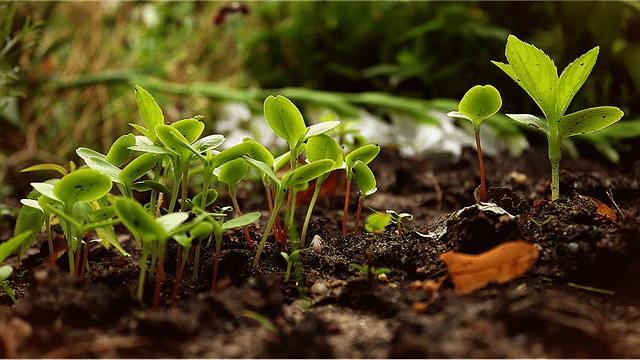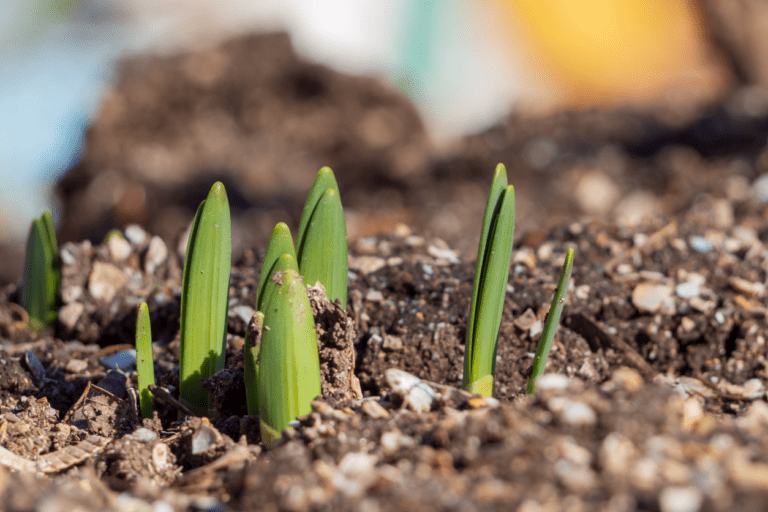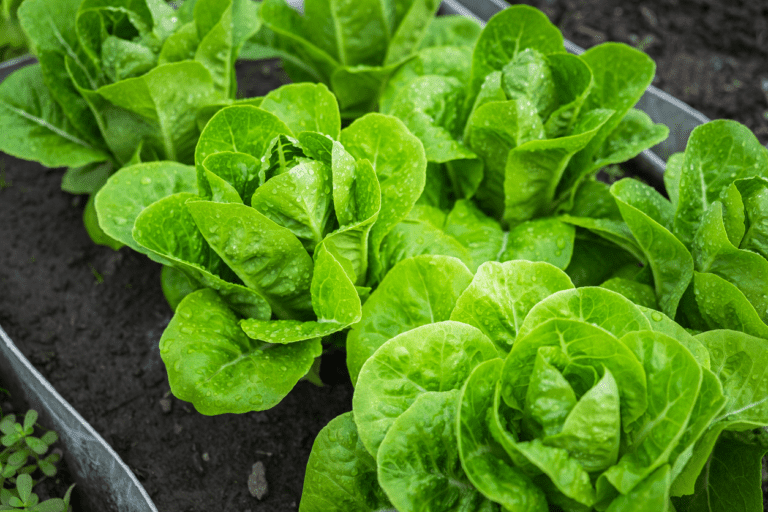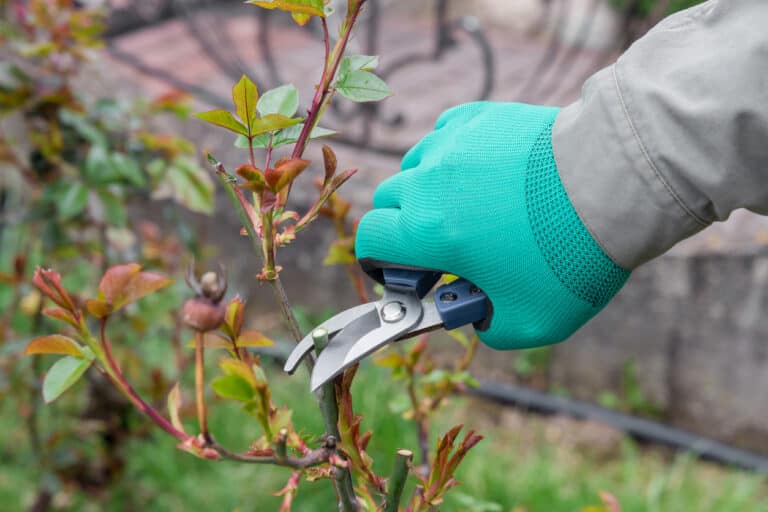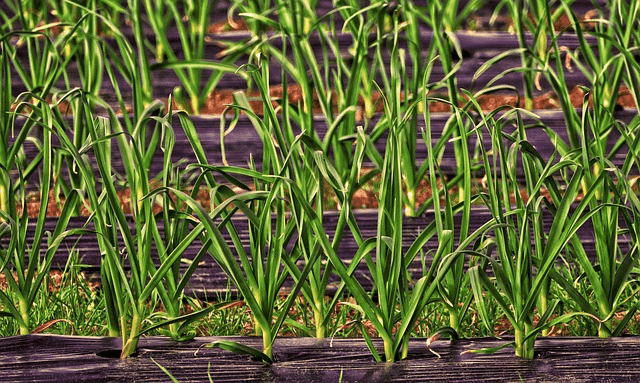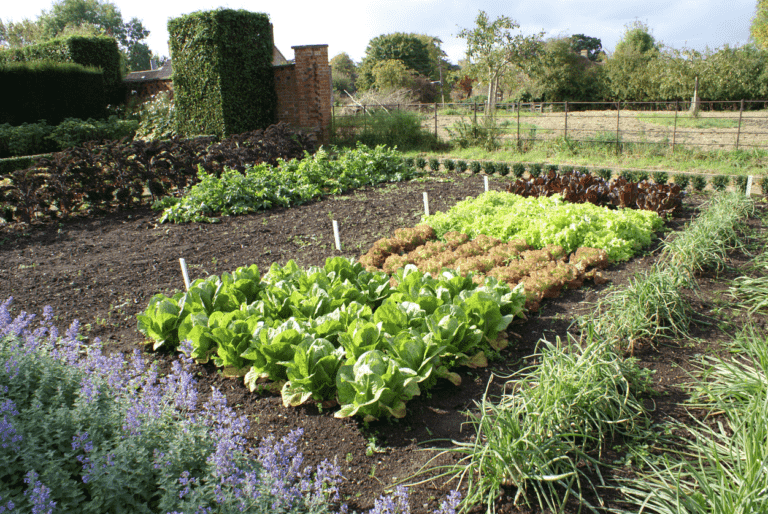The 5 best greenhouse heaters for 2023
A good greenhouse heater helps keep your greenhouse warm. During cold weather, it can prevent freezing, extending your growing season by weeks. This way, you create a warmer environment for your plants so that they can grow even in zones that are not suitable for them.
In this article, we help you find the best heater for your plants. It doesn’t matter if you have a small greenhouse or a big one; there’s the right product for you.
Bio Green Palma
Dr. Heater DR218-1500W Infrared Heater
Mr. Heater Big Buddy
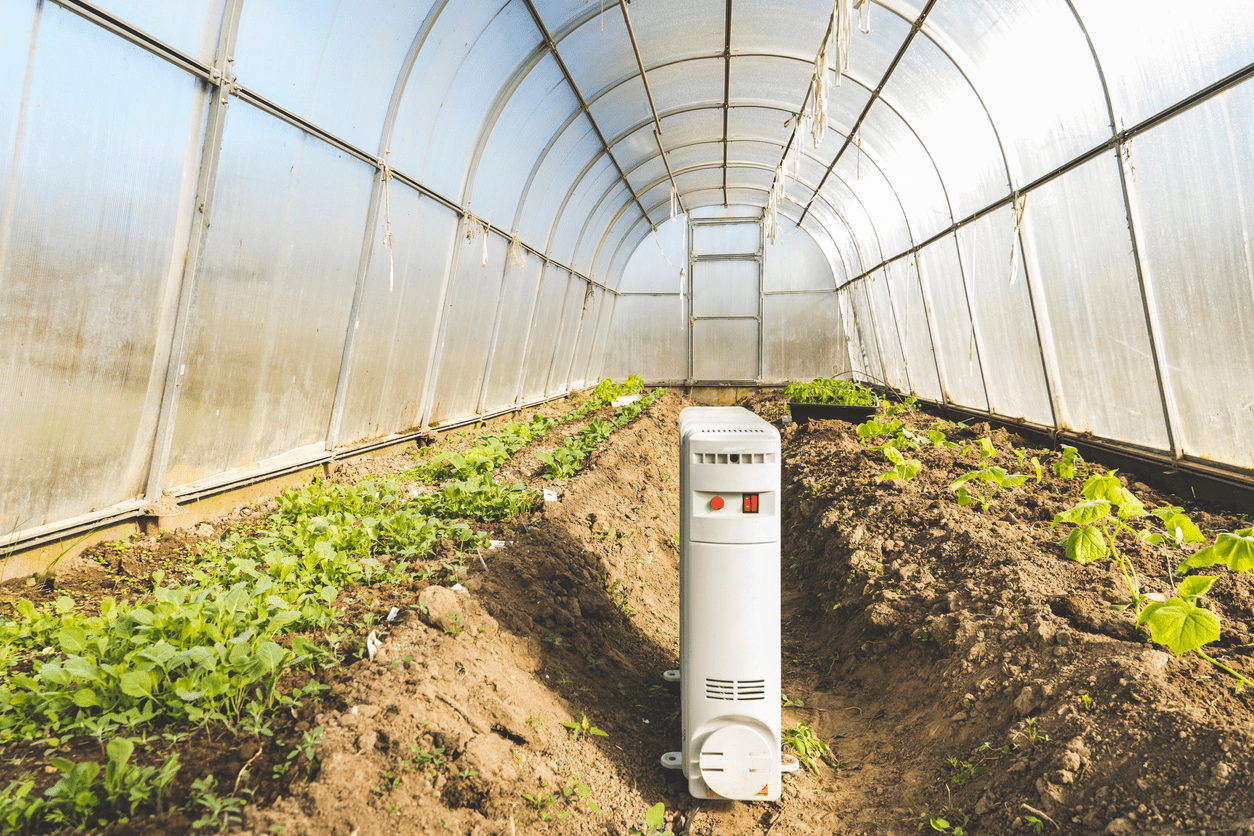
What are the best greenhouse heaters?
Before you can pick the best greenhouse heater for your needs, you need to figure out the type of heater you need. Here is the list of the most common types of greenhouse heaters.
In this list, we use BTU, which stands for British Thermal Unit. BTU is used to measure the heating capacity. The higher the BTU rating, the more heat output the heater can produce.
Electric heaters
Electric heaters are very easy to use. For most beginner gardeners, it’s the obvious choice. You only need an electric outlet to plug them in, and it works. You don’t have to worry about fuel; there are zero fumes.
Electricity is generally a clean energy source, and electric heaters are affordable. They also have minimal maintenance. An electric greenhouse heater might be the best choice for small greenhouses. However, they have limited heating power, so it might not be the best solution for larger greenhouses. Also, if you are a commercial grower, you might need an alternate heat source for electric outages.
Best Electric Greenhouse Heaters for small greenhouses
Bio Green PAL 2.0/USDT Palma Greenhouse Heater
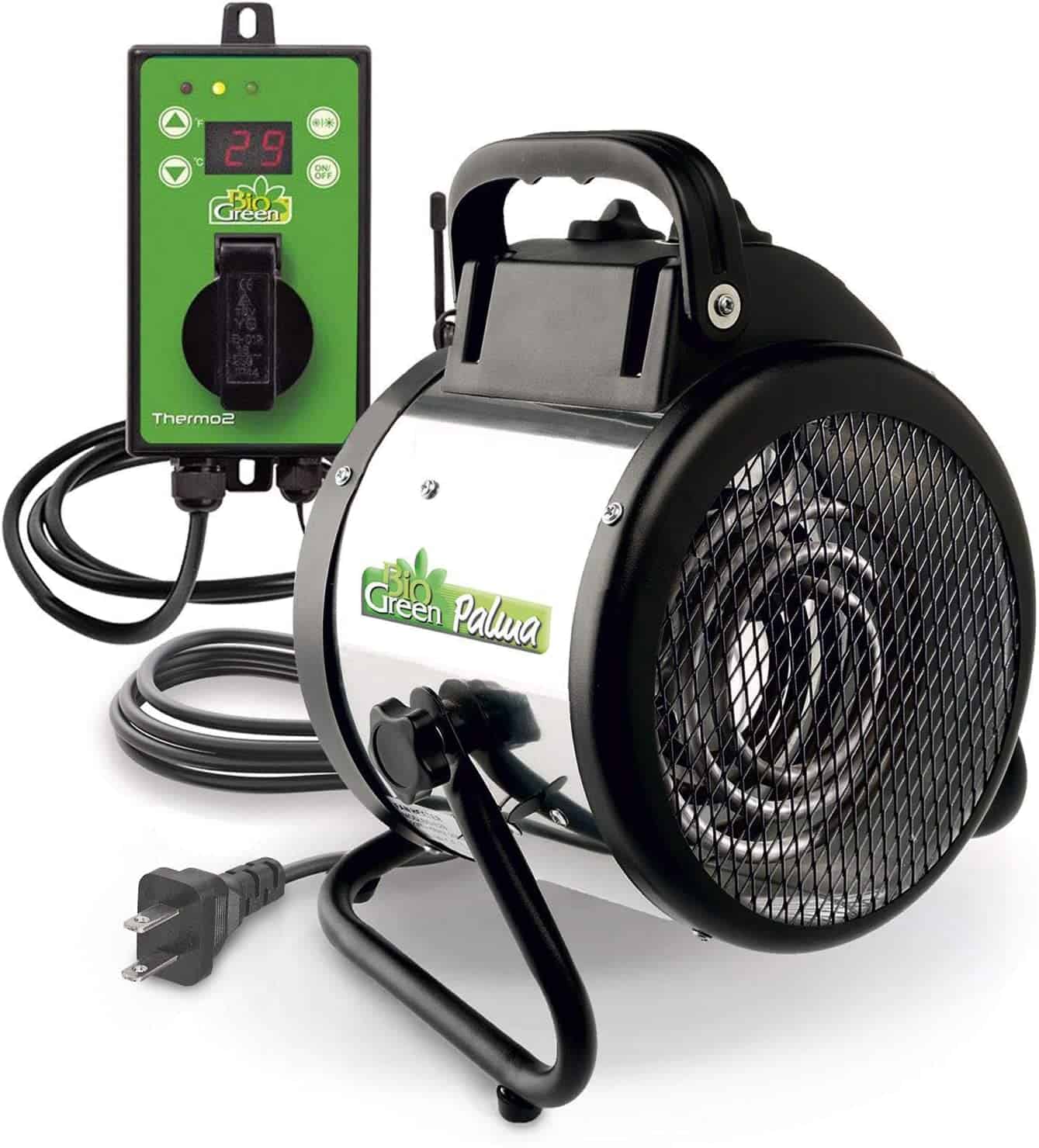
The Bio Green Palma is ideal for greenhouses up to 120 sq ft. The heating output is 5118 BTUs or 1500W. This might be your choice if you want an affordable, easy-to-install electric solution.
Pros:
Adjustable thermostat control
Energy efficient
Portable, lightweight
Built-in ventilation
Cons:
The heat output might be insufficient for really cold climates.
Bio Green PHX 2.8/US Phoenix Greenhouse Heater
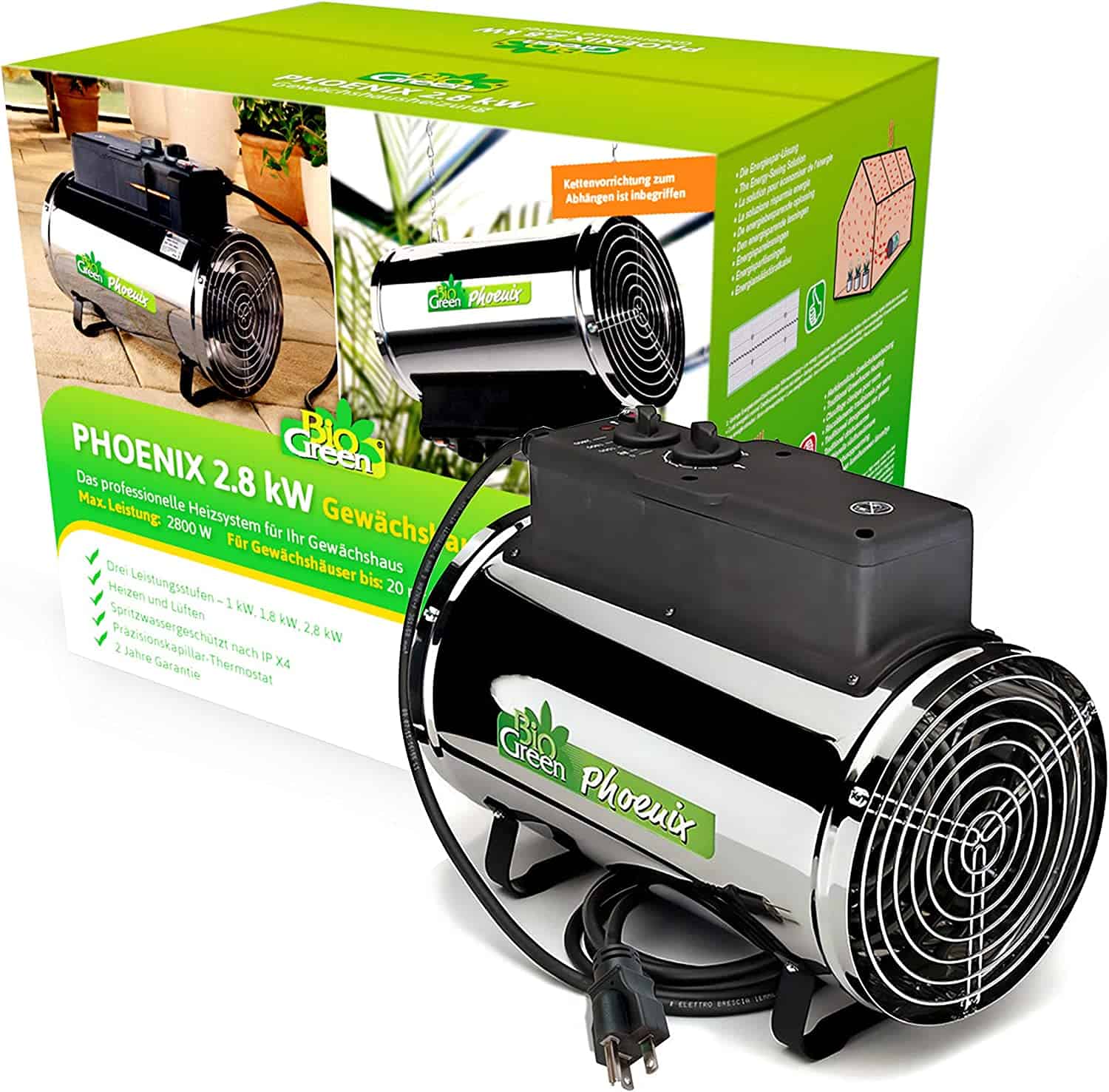
The Bio Green Phoenix is a bigger version of the Bio Green Palma. It has a maximal heat output of 9553 BTUs or 2,800 W. This might be an ideal choice for a normal-size, 10 x 20 backyard greenhouse.
Pros
Three heat output options 1Kw/3412 BTU, 1.8kW 6141 BTU, 2.8kW /9553 BTU
Includes hanging chains and brackets as well.
High-quality stainless steel
Cons
This electric heater operates at 220-240V
Dr. Heater DR218-1500W Infrared Heater
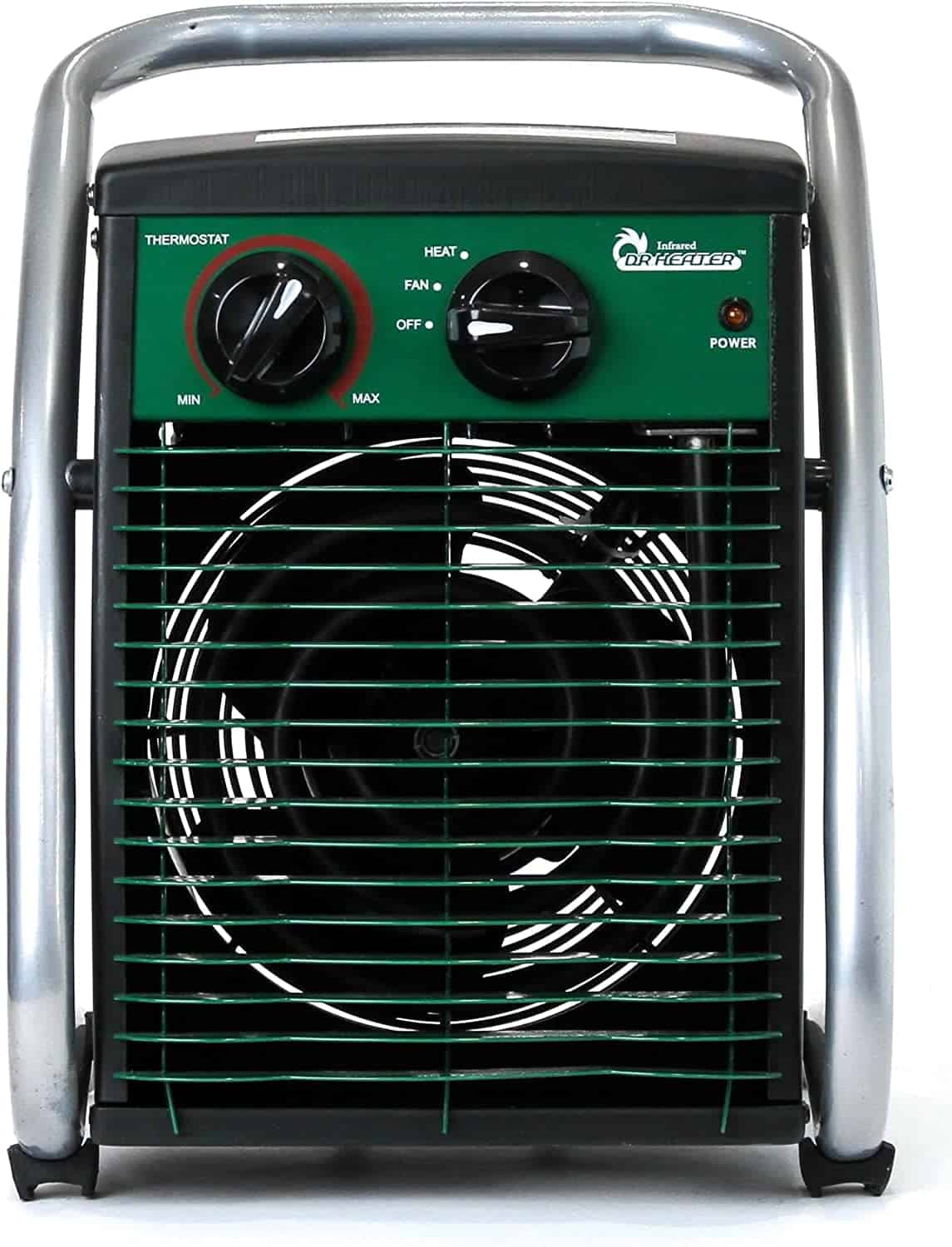
The Dr. Heater DR218 Infrared Heater has a 1,500W output. Infrared heaters only need electricity to operate. Suitable for greenhouses up to 150 sq ft.
Pros
Portable, lightweight solution
Built-in fans
Operating at low cost.
Cons
The temperature range is not the widest
Relatively small heat output
Propane heaters
Propane heaters generally have high heating power, making them suitable for a medium size or larger greenhouses. At scale, their cost of running is relatively affordable. They can quickly heat a large area. Propane heaters are portable, and you don’t have to worry about electricity. In most areas, it’s easy to get a propane tank, and it’s readily available. Using them for greenhouse heating needs some considerations. They are not as clean as electric heaters, and more maintenance is involved.
Best Propane Greenhouse Heaters
Mr. Heater Big Buddy Indoor/Outdoor Portable Propane Heater
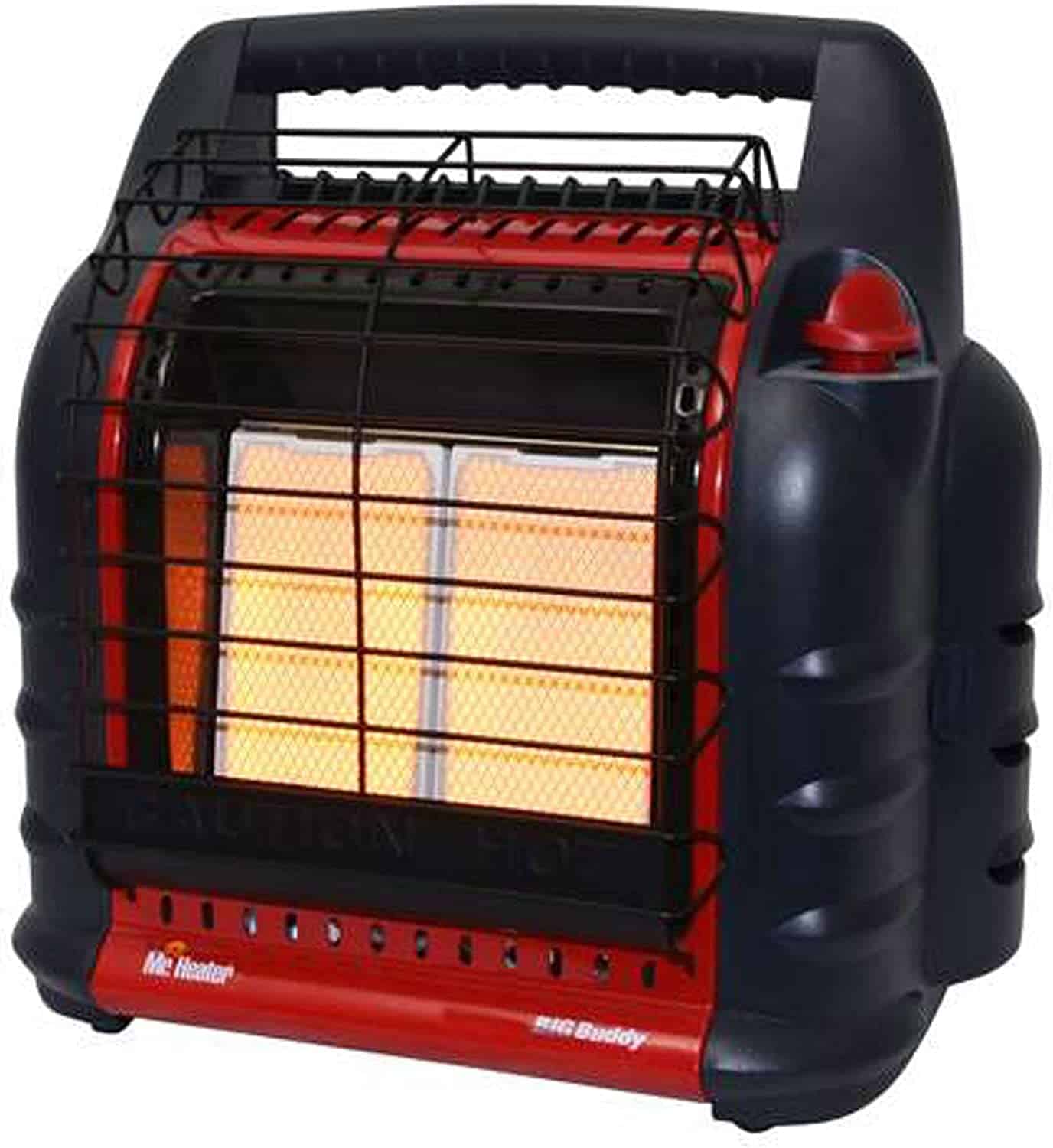
The Mr. Heater Big Buddy Portable Heater is a convenient and high-performing indoor safe heater. The heater has 4,000, 9,000, or 18,000 British thermal units of heat output. Capable of heating medium-sized greenhouses, up to 4-800 sq ft, dependent on the climate.
Pros
Built-in Oxygen Depletion Sensor (ODS) and tip-over detection.
This is a portable heater, and you can quickly move it.
The heating output is impressive at 18,000 BTUs.
Cons
The heater can consume a lot of propane quickly. You might change bottles regularly.
It has no built-in fan so you might get ventilation for equal heat distribution.
BLUU Propane Heater 20,000 BTU
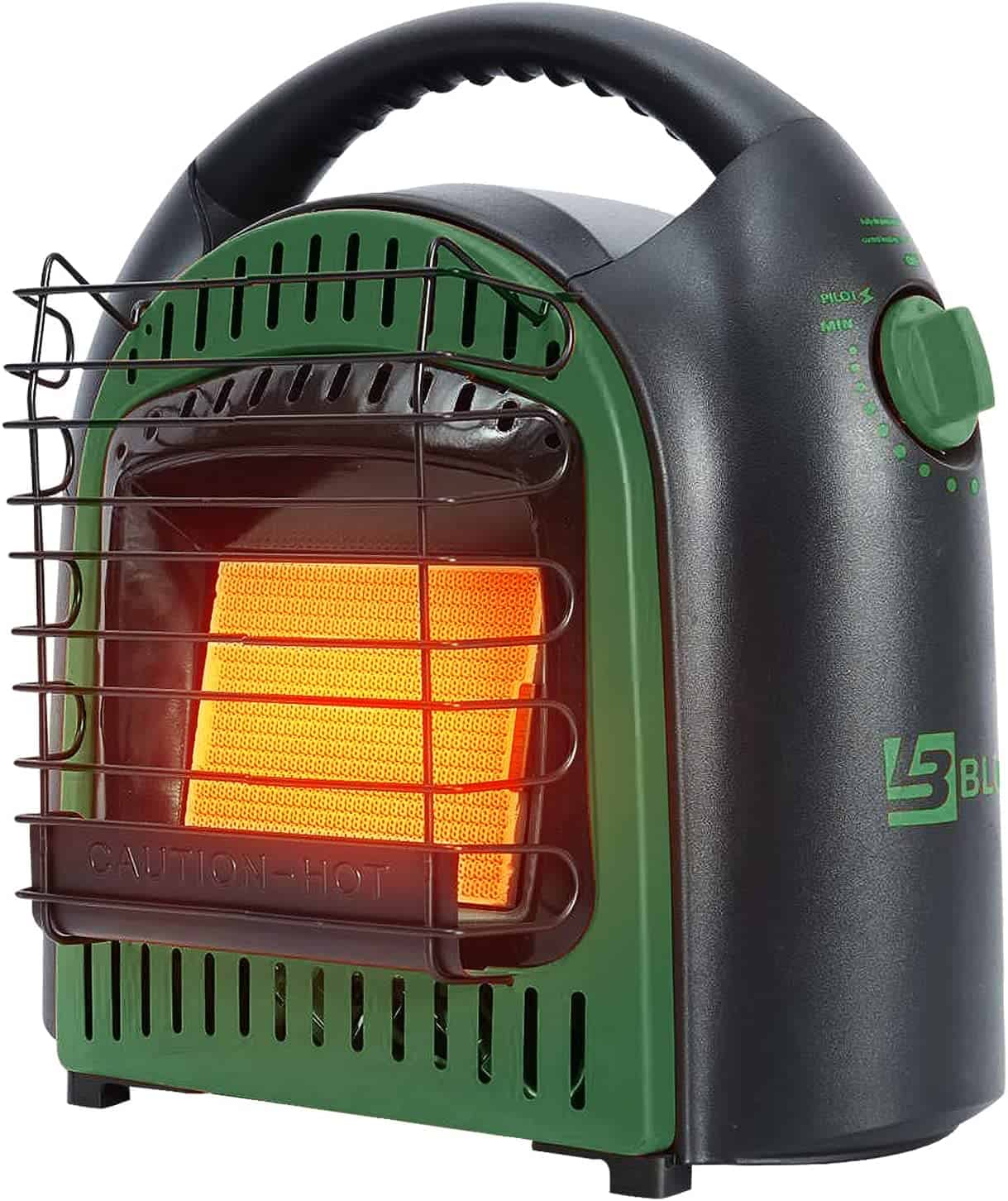
The BLUU Propane Heater is a portable, energy-efficient propane heater. The heating capacity is 20,000 BTUs, sufficient for a greenhouse between 4-800 square feet.
Pros
ODS and tip-over auto shutoff
Up to 10-step built-in thermostat
30% less fuel usage based on the manufacturer
Compatible with multiple tank sizes.
Cons
This heater should only be used in ventilated greenhouses.
Natural gas heaters
Natural gas heaters are similar to propane heaters in terms of heating capacity, but they burn natural gas, which is a cleaner option than propane. You don’t have to worry about replacing the gas tank. They produce fewer emissions than propane heaters. The only downside of natural gas is that it’s unavailable in many areas. You need a connection to it, and the costs of setting it up can be higher. If you have access to natural gas and a large greenhouse, it can be the most efficient choice in the long run.
Solar heating system
A Solar heating system can consist of 3 main ingredients: solar panels, a battery, and an electric heater. The battery is not absolutely necessary; however, if you want to heat your greenhouse during the cold nights when there’s no sunshine, you can’t skip that part. Such a system can be best for milder climates with much sunshine when you need only a little extra heating. Solar panels generate free electricity, which makes this system self-sustainable.
What to consider when choosing the best greenhouse heater?
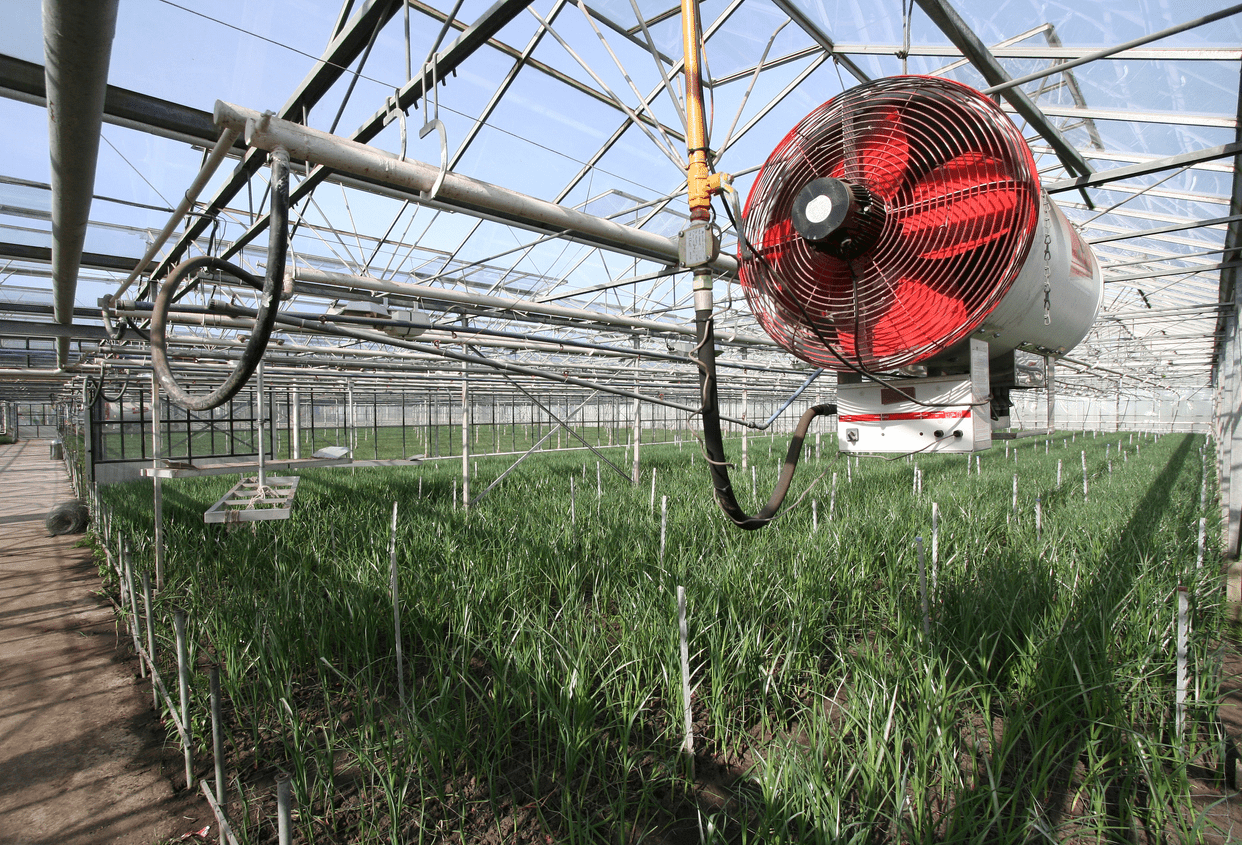
When choosing a greenhouse heater, there are several factors to consider.
Size of the greenhouse: You want to buy just the right-sized heater for your greenhouse. The heater should be powerful enough to keep your greenhouse temperature as needed. On the other hand, if it’s too powerful, it can waste energy.
Type of fuel: As mentioned above, there are different options when it comes to fuel sources. Electricity is clean and easily accessible but not 100% secure. Gas heaters have a bigger capacity, generally for bigger greenhouses.
Safety features: Safety should be a top priority when you buy your heater. Safety features in a greenhouse heater can be tip-over protection, overheat protection, or oxygen depletion sensors in case of gas heaters.
Installation / Portability: Portable heaters are easy to maneuver around your greenhouse plants. Gas heaters can be more challenging to install or move around your plants. Keep this in mind when choosing the right heater for your needs.
- Ongoing costs: While electricity is cost-efficient for small greenhouses, heating a large greenhouse can cost a lot. Generally speaking, somewhere above 150-200 square feet of space, electricity can be way more expensive than gas, considering the installation and the heater itself.
Summary
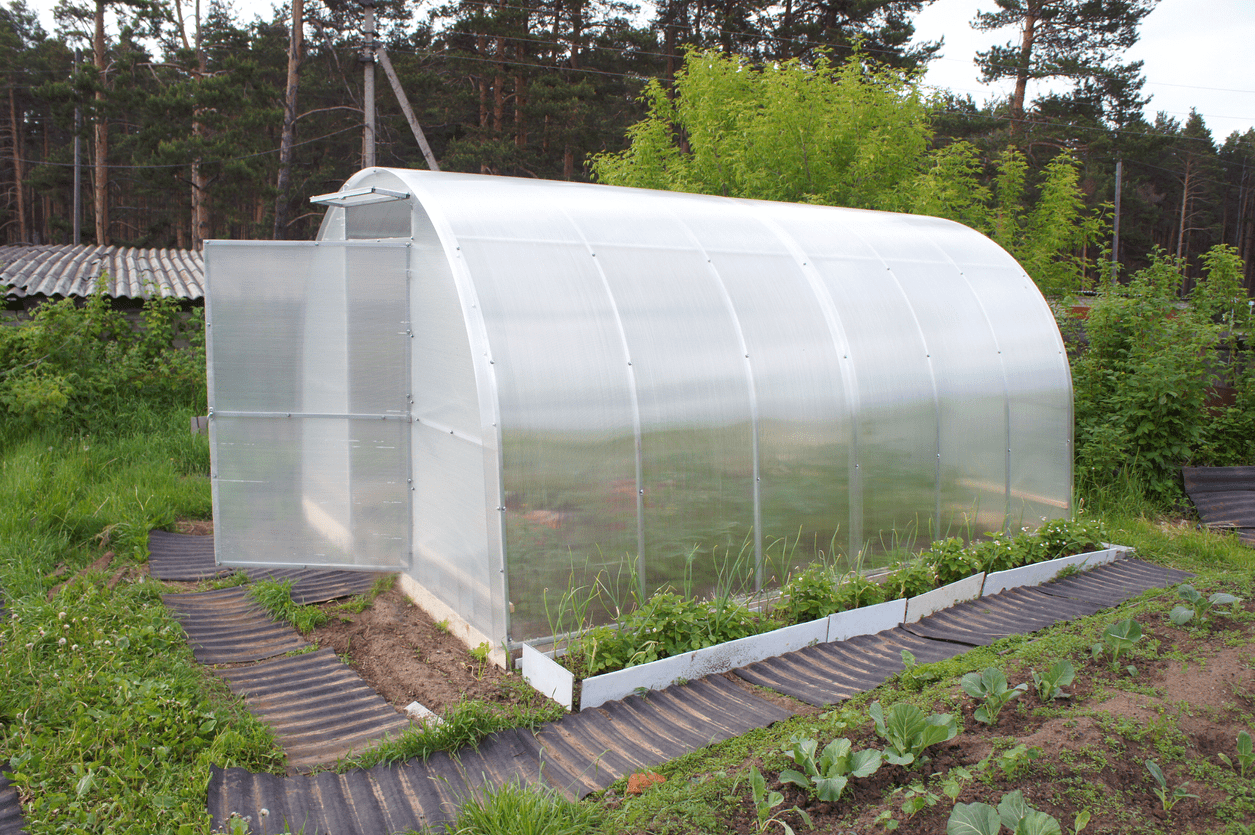
Greenhouse heating can extend your season by several weeks. During those times, you can produce fresh veggies, which is priceless. I hope this article can help you pick the right heater.

